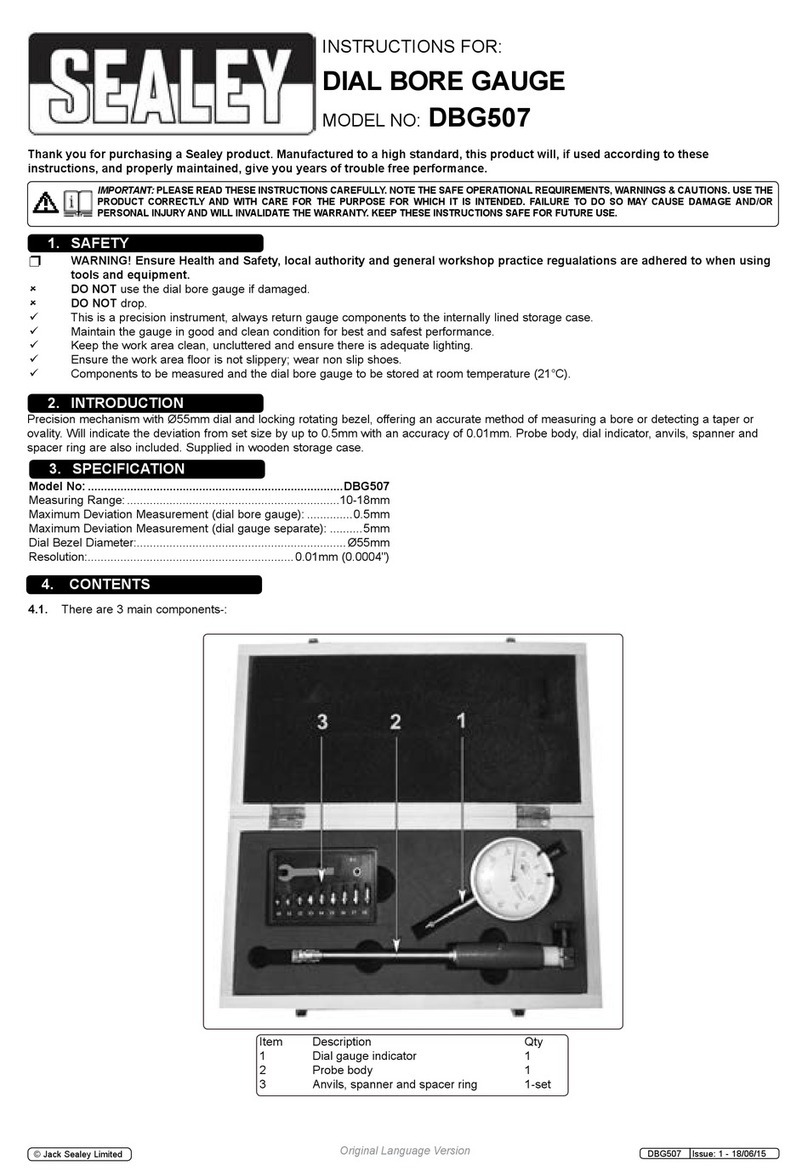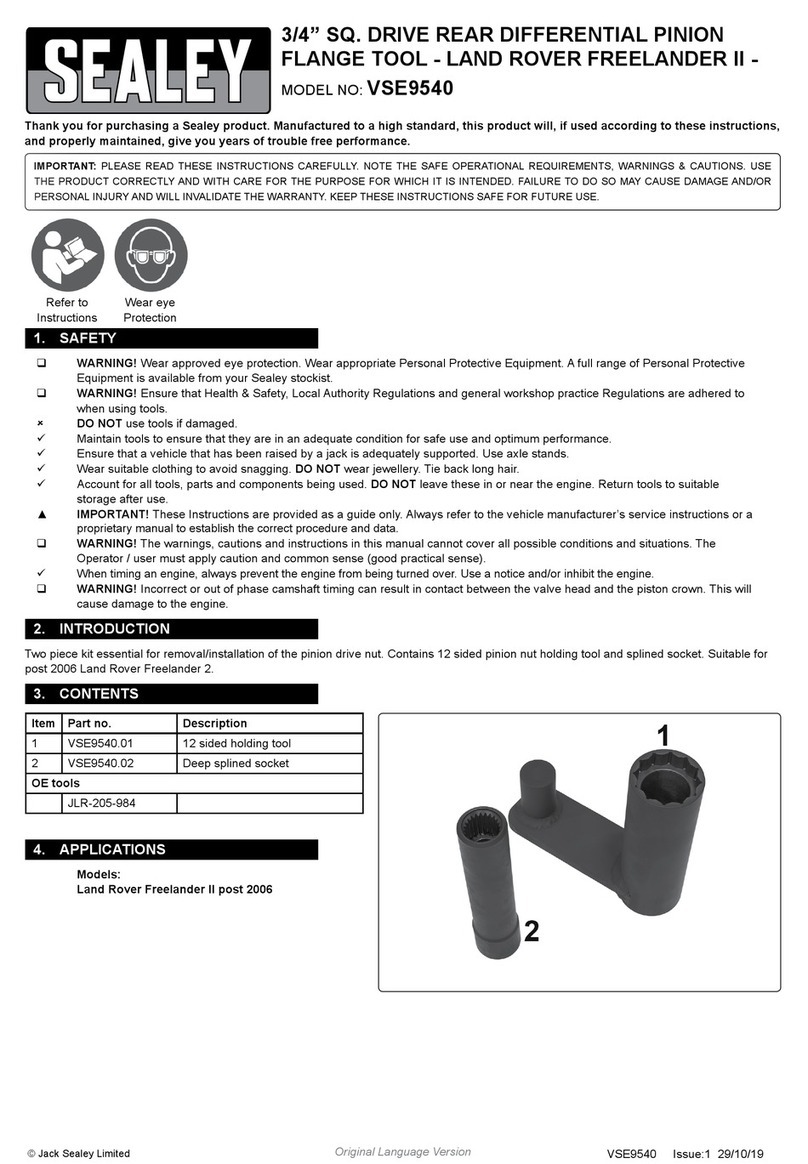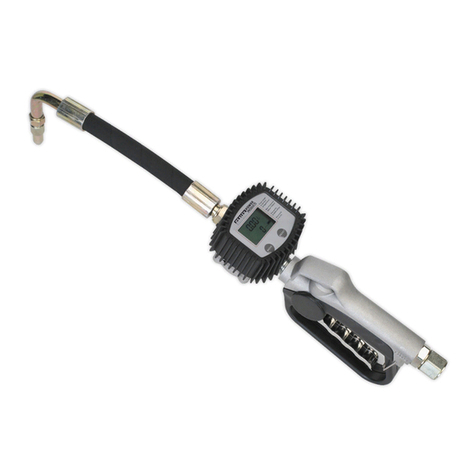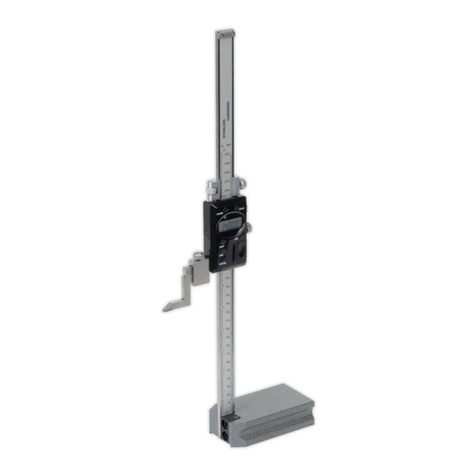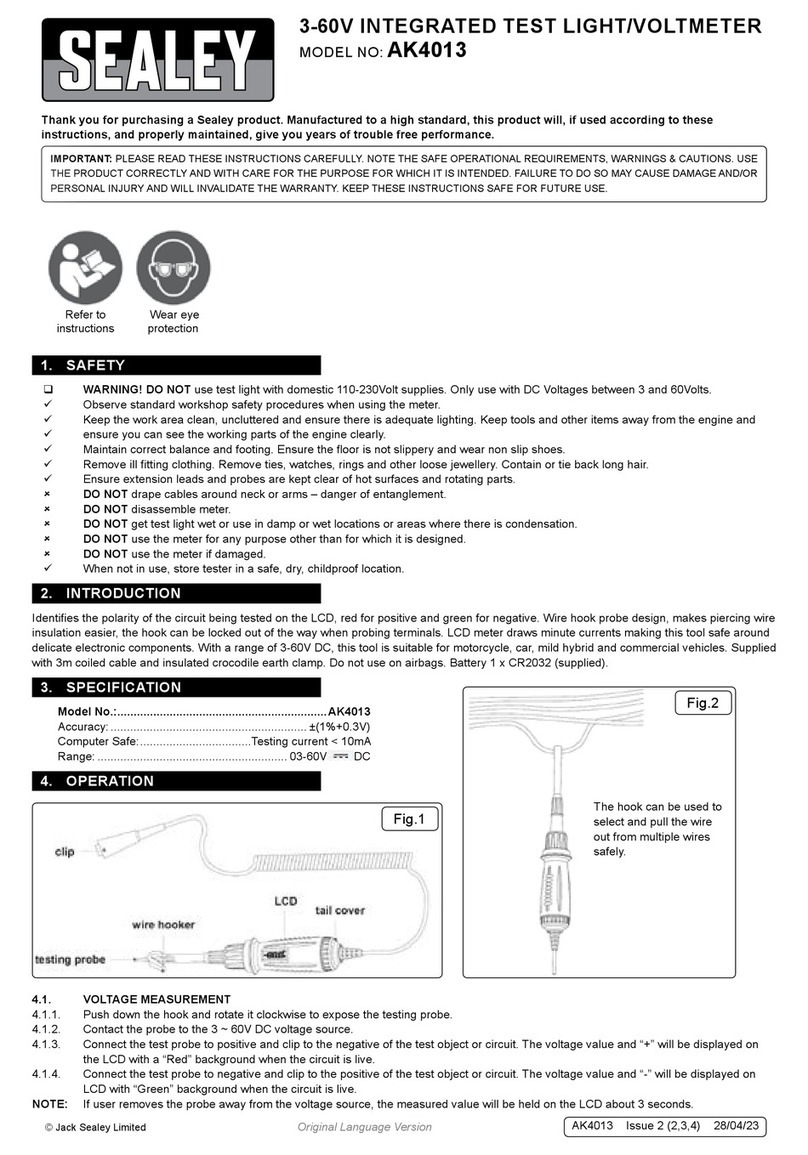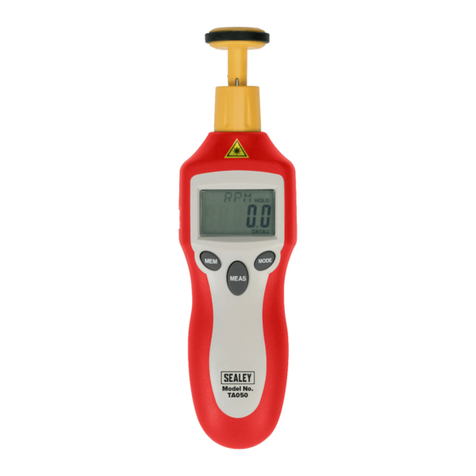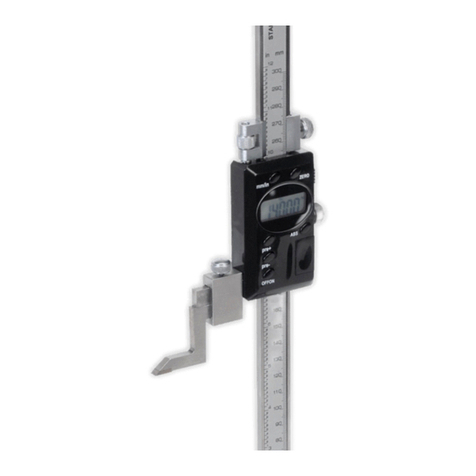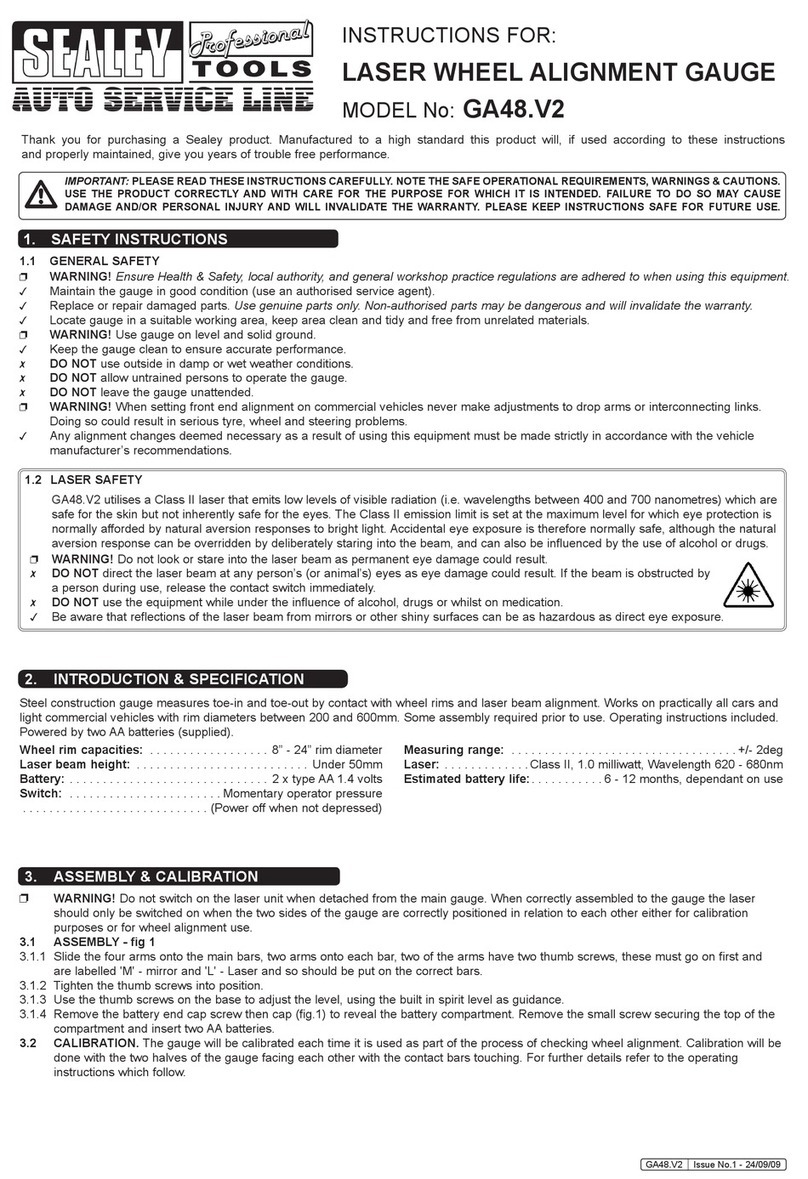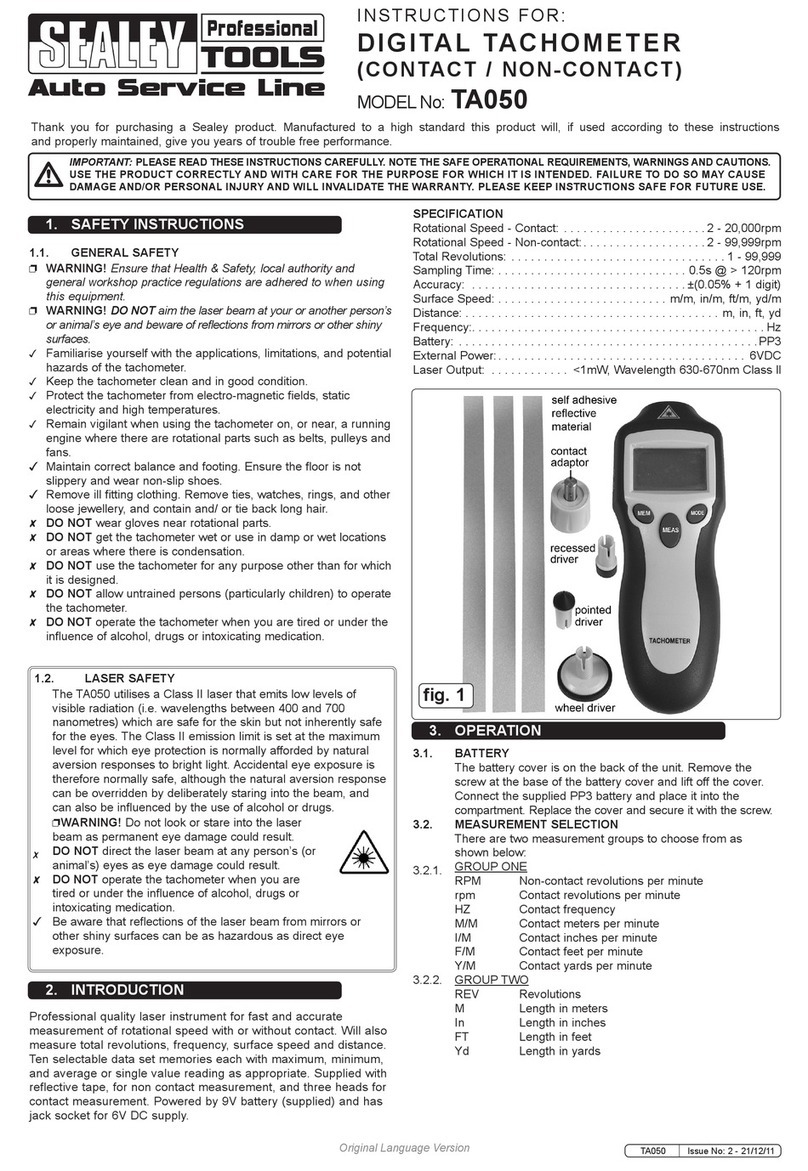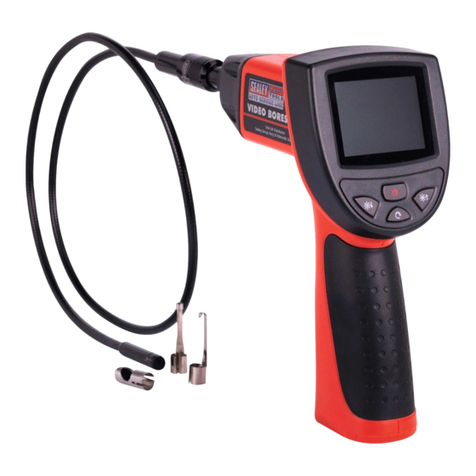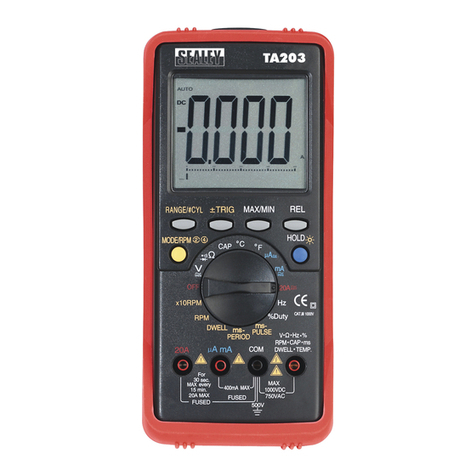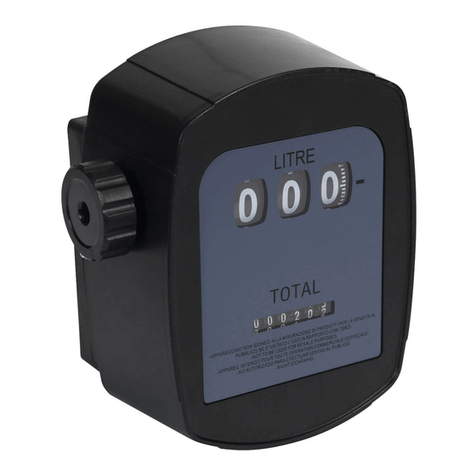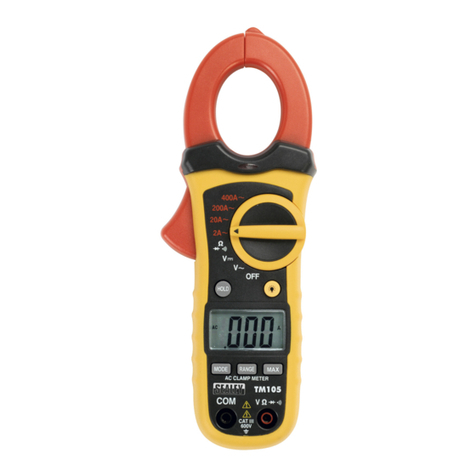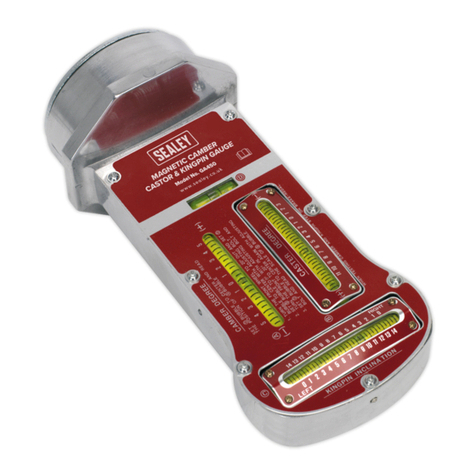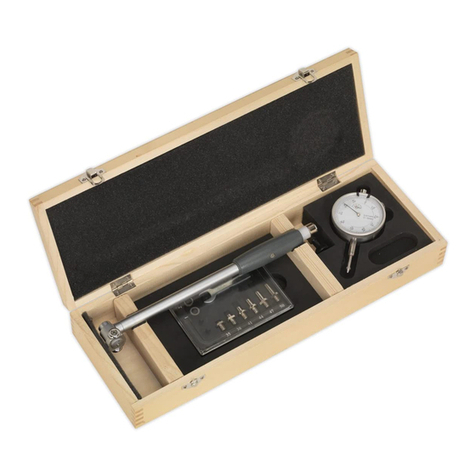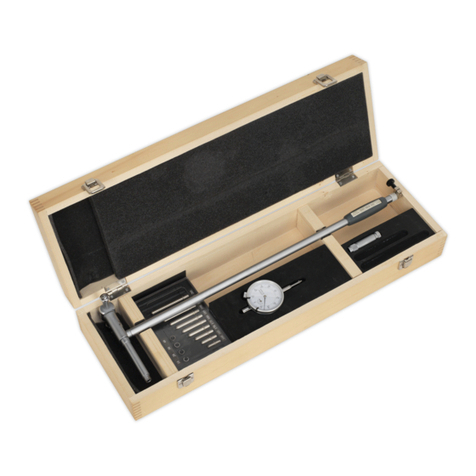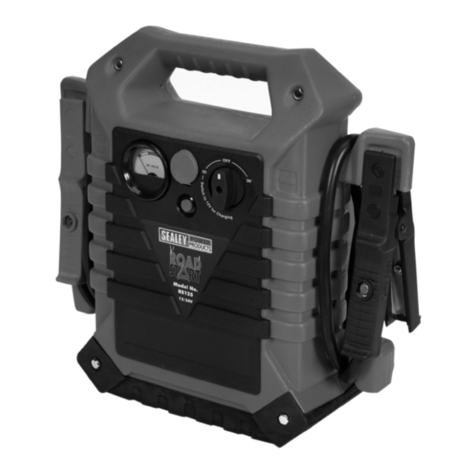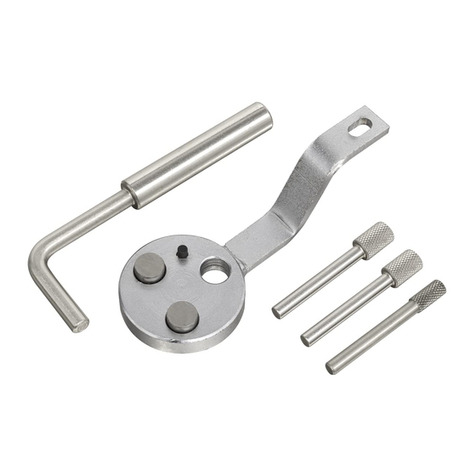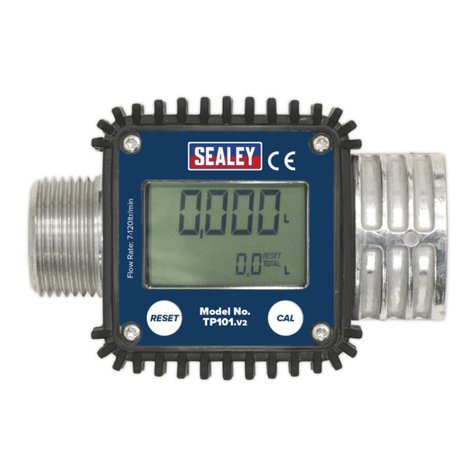
Note: If ‘1’ appears in the display during a measurement, the value exceeds the range you have selected. Select a higher range.
Note:OnsomelowACandDCranges,withthetestleadsnotconnectedtoadevice,thedisplaymayshowarandomuctuating
reading. This is normal and is caused by the high input sensitivity. The reading will stabilise and give a correct measurement when
connected to a circuit.
5.3. Data Hold Button
5.3.1. The data hold function allows the analyser to freeze a measurement reading for later reference.
5.3.2. Press the data hold button once to freeze the reading in the display. The indicator ‘H’ will appear in the display.
5.3.3. Press the data hold button again to return to normal operation.
5.4. AC Voltage Measurement
5.4.1. Insert the black test lead into the negative COM socket and the red test lead into the positive socket.
5.4.2. Turn the function dial to the appropriate AC voltage setting as required and switch the analyser on (see ranges above). If the voltage
range to be measured is not known, set to the highest range setting, and then select to the correct range when first reading is taken, until
a satisfactory resolution is obtained.
5.4.3. Connect the test leads to the circuit under test and read the voltage on the display.
5.5. DC Voltage Measurement
5.5.1. Insert the black test lead into the negative COM socket and the red test lead into the positive socket.
5.5.2. Turn the function dial to the appropriate DC voltage setting as required and switch the analyser on (see ranges above). If the voltage
range to be measured is not known, set to the highest range setting, and then select to the correct range when first reading is taken, until
a satisfactory resolution is obtained.
5.5.3. Connect the test leads to the circuit under test and read the voltage on the display.
5.6. DC Current Measurement
WARNING! DO NOT make current measurements at 10A for longer than 15 seconds in every 15 minutes. Exceeding this may cause
damage to the analyser and test leads.
5.6.1. Insert the black test lead into the negative COM socket, and the red test lead into the positive mA socket (or the positive 10A socket for
currents from 200mA to 10A).
5.6.2. Turn the function dial to the appropriate setting as required (see ranges above). If the current range to be measured is not known, set to
the highest range setting, and then select to the correct range when the first reading is taken, until satisfactory resolution is obtained.
Connect the test leads in series with the circuit under test and read the current on the display.
5.7. Diode Measurement
5.7.1. Insert the black test lead into the negative COM socket and the red test lead into the positive socket.
Turn the function dial to the position and switch the analyser on.
5.7.2. Connect the red test lead to the anode of the diode, and the black test lead to the cathode of the diode.
5.7.3. The approximate forward voltage drop of the diode will be displayed. If the connection is reversed, a fig “1” will be displayed.
5.8. Transistor Measurement
5.8.1. Determine whether the transistor to be tested is NPN or PNP and locate the E, B and C leads. Insert the leads into the respective slots
in the testing socket located on the front of the analyser.
5.8.2. Turn the function dial to the hFE position and switch the analyser on.
The approximate hFE value of the transistor will be shown on the display, at the test condition of base current 10uA and Vce 3V.
5.9. Resistance Measurement
5.9.1. Insert the black test lead into the negative COM socket and the red test lead into the positive socket.
5.9.2. TurnthefunctiondialtothedesiredΩpositionandswitchtheanalyseron.
5.9.3. Connect the test leads to the resistor to be tested and read the value on the display.
5.10. Audible Continuity Test
5.10.1. Insert the black test lead into the negative COM socket and the red test lead into the positive socket.
5.10.2. Turn the function dial to the position and switch the analyser on.
5.10.3. Connect the test leads to the two terminals of the circuit to be tested.
5.10.4. If the resistance is less than 30Ω, then an audible warning will be given.
5.11. Frequency Measurement
5.11.1. Insert the black test lead into the negative COM socket and the red test lead into the positive socket.
5.11.2. Turn the function dial to the Hz 20k position and switch the analyser on.
5.12. Connect the test leads to the source or load to be measured and read the value on the display.
5.13. Temperature Measurement
5.13.1. Insert the type K thermocouple plug into the temperature socket on the front of the analyser, ensuring the positive ‘+’ pin on the plug is
inserted into the positive slot, and the negative ‘-’ pin on the plug is inserted into the negative slot.
5.13.2. Turn the function dial to the °C or °F position and switch the analyser on.
5.13.3. Place the thermocouple on the item to be measured and read the temperature on the display.
5.14. RPM (Tachometer) Measurement
5.14.1. Insert the black test lead into the negative COM socket and the red test lead into the positive socket.
5.14.2. Turn the function dial to the desired position, according to the number of cylinders of the engine being tested, and switch the
analyser on. If the vehicle uses a DIS ignition system with no distributor, connect the red test lead to the TACH (tachometer) signal line
(which is connected to the computer DIS module of the engine). If the vehicle uses an ignition system with a distributor, connect the red
test lead to the primary negative end of the ignition coil. Connect the black test lead to an earthing point, or the negative terminal of the
vehicle battery. Note: Refer to the vehicle manufacturer’s manual for the specific location and more details. Start the engine and the RPM
will be shown on the display.
5.15. Dwell Angle Measurement
5.15.1. Insert the black test lead into the negative COM socket and the red test lead into the positive socket.
5.15.2. Turn the function dial to the position that corresponds with the correct number of cylinders for the engine being tested and switch the
analyser on.
5.15.3. If the vehicle uses a DIS ignition system with no distributor, connect the red test lead to the TACH (tachometer) signal line (which is
connected to the computer DIS module of the engine). If the vehicle uses an ignition system with a distributor, connect the red test lead
to the primary negative end of the ignition coil. Connect the black test lead to an earthing point, or the negative terminal of the vehicle
battery. Note: Refer to the vehicle manufacturer’s manual for the specific location and more details.
Original Language Version
© Jack Sealey Limited TA102 | Issue:5 (H,F) 01/06/18
